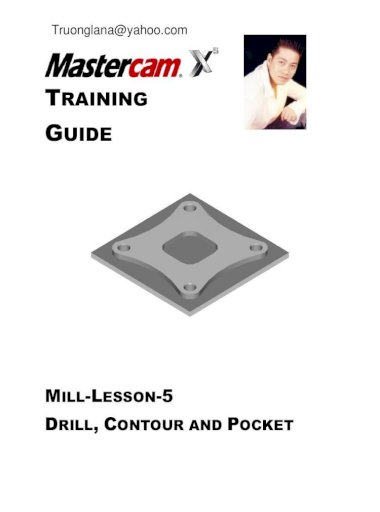
250 in diameter and EXACTLY 2.000" apart. For the sake of simplicity, we won't address the tolerance issues with this part. Imagine you have a part with two 1/4" dowel pins spaced 2" apart. Your lack of acknowledgment to any of the answers to your question means either you haven't read them, you've lost interest, or you still don't get the whole bonus thing and are still waiting for a suitable response. JHG RE: GD&T MMC versus Tolerance drawoh (Mechanical) 30 Aug 10 14:13

MASTERCAM X4 HOLE CENTER PLUS
Your maximum size should should be your minimum size plus a reasonable positional tolerance plus a reasonable total variation in your hole making process. Your maximum hole specification allows for drilling orpunching tolerances as well as positional tolerance.If your part is thick, consider using a projected tolerance zone on your hole underneath. You are interested in the space above the hole. The positional tolerance of your mating hole, whatever it is, controls the hole, not the space above the hole.For a screw, it is the maximum diameter, plus the positional tolerance of your tapped hole. In the case of a bolt, this is the maximum diameter of the bolt. The minimum hole size should be the maximum space occupied by your fastener.They must open up the hole to get some positional allowance. When you specify something like a Ø5/4.2 hole, you are not getting Ø4.2.I have had one shop get back to me asking WTF I am doing. I have been specifying holes with zero positional tolerance at MMC for some time now. RE: GD&T MMC versus Tolerance PeterStock (Mechanical) 26 Aug 10 15:28 Rational - If a Designer calculated the tolerance of a hole at its smallest allowable size and the hole ends up bigger, we take that extra size difference (bonus) and add it to our position tolerance. As the size of the hole changes, so does the calculated positional tolerance. The calculated positional tolerance would be. Subtract the actual size of the hole from this dimension (.235) and you now have the calculated positional tolerance. 010 beyond its MMC (.245) and the would equal a boundary of. I would always think of the requirement as a diametrical tolerance zone of. The MMC (maximum material condition) will be its smallest allowable diameter - in this case. Let's say you have a hole with a diameter of. 010 at MMC, it is dependent upon the size. If you see a diametrical tolerance zone of. It doesn't matter about the size, it is a radial tolerance of. 005 (1/2 the diametrical tolerance zone) about the theoretical center. 010, it means that there is a radial tolerance of. If you have a diametrical tolerance zone of.


 0 kommentar(er)
0 kommentar(er)
